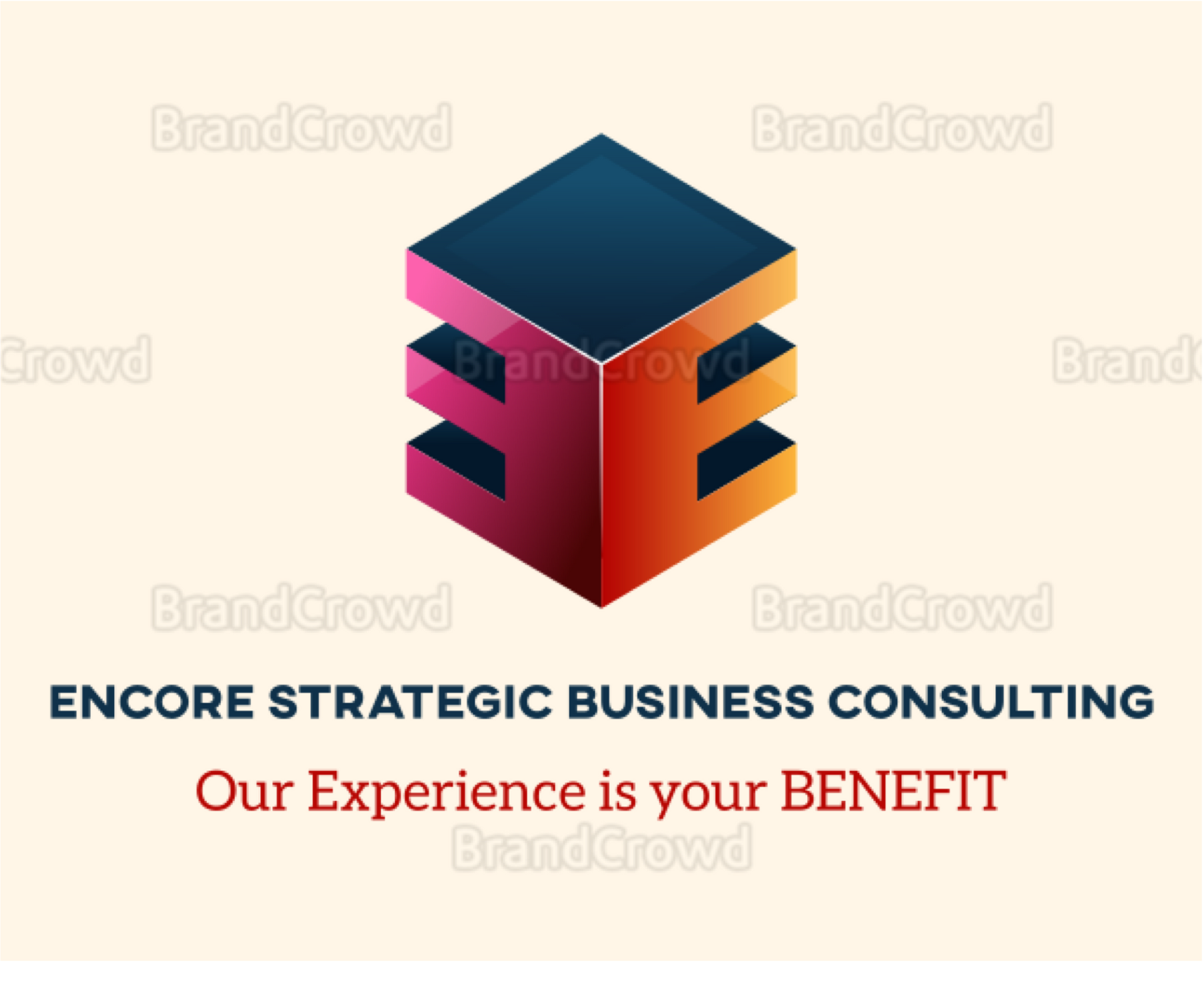Tom Greenbaum, Founder , Encore Strategic Business Consulting • July 12, 2021
The Downfall of Effective TV Commercials this Decade
What is Happening To Television Advertising?
Did They Forget About the Basics
By: Tom Greenbaum; Founder, Encore Strategic Business Consulting
There is no question that the percentage of advertising dollars that are allocated to television has declined dramatically in recent years. In 2021, it is projected that television will account for less than 30% of total advertising spending for the first time in many years. In my opinion, this definitely is largely due to the focus on internet/digital advertising. However, I also feel very strongly that the effectiveness of television ads has declined steadily, both due to the reduction of spending, but even more importantly because it really appears that many, if not most, advertisers seem to have lost touch with what made tv advertising the giant media vehicle that it has become.
There are several factors that I have identified which I feel has contributed to the decline of television as an essential media vehicle in todays marketing environment. Is indicated below, this relates to both
media and copy considerations. Specifically:
• Why don’t advertisers understand the importance of quintile analyses. This is the calculation ( estimate) of the number of times viewers see a particular commercial I'm a week or month. Many years ago when I was at Procter & Gamble (Paper Products Division) we paid a lot of attention to the topic of “commercial wear out”, recognizing that viewers tire of seeing the same ads all the time, and eventually the advertising has the opposite effect that was intended. While there are many theories about how many times an individual see an ad before they become aware of it and are able to understand the message. We also recognize that at some point viewers get so tired of seeing the same execution that they actually get angry with the advertiser. Some obvious examples of this in the current environment are the Liberty Mutual campaign (Only pay for what you need), and the Spectrum Cable effort. These two just do not seem to understand that viewers tend to habitually view the same types of programs, such as sporting events or tv programs, and each time they frequently will see 3-5 identical commercials.
A quintile analysis will show the approximate number of times the top 20%, next 20% and so forth see a specific commercial spot in a four week period. This type of analysis is used to determine the number of different executions that are necessary for a particular spending level so commercial wear out/viewer annoyance does not occur. One advertiser who really seems to understand this principle is GEICO (15minutes, save 15%) as they produce a large number of different executions so people will not get turned off by the ads due to seeing them so often.
• A second major issue that reduces the effectiveness of most television advertising is focus on communication of a specific message. I rarely view a tv ad when I can understand what the copy point is they are trying to communicate. For example, I challenge anyone to tell me what the advertising message is for any automobile currently advertising on television. Specifically, what are they trying to communicate about the automobile that would set it aside from competition? All the advertising in this category sees to be totally focussed on the pricing and financing of the vehicles. However, it is impossible to understand what the differences are among the various vehicles that might motivate me to purchase one.
I may be old fashioned , but I was taught many years ago that “the words and pictures should work together” and for advertising to be really effective it should communicate a problem that has been solved by the product or service sponsoring the advertising. For some reason I can not understand, so much of the advertising today is structured to create a mood for about 25 seconds and then for the last five seconds the name of the product or service who sponsored the campaign is identified.
• A third factor that I believe contributes to poor television advertising communication is the infrequent use of a well thought-out slogan that is integral to the execution. Think back to advertising campaigns what emphasized slogans such as “please don’t squeeze the Charmin” or “Where’s the beef”. These were iconic campaigns for Chamin Bathroom Tissue and Wendy’s Fast Food restaurants that they became part of the lingo of regular communications. There are a few who have done this very well in the current market such as BMW ( the ultimate driving machine) , Dunkin Doughnuts (America Runs on Dunkin) and Nike (just do it!), but they are very much among the minority.
• Finally, I really wonder how much quality advertising research is being conducted today vs in the past. Years ago we used to to “day after recall” research to determine if an execution was successful in breaking through the clutter and therefore seen by the viewers. But even more importantly, we spend large amounts of money to determine whether the viewers who were identified as being in the commercial audience could recall they key copy points that the advertiser had intended. Further, we also used to do extensive quantitative research to determine both aided and unaided awareness of the advertising, and how this changes from year to year.
In the current environment, companies seem to be relying on the results of focus groups to drive most aspects of their marketing programs. As a person who conducted about 3500 focus groups and wrote four books on the subject, I know how rare it is to find a focus group moderator who is properly trained and can provide quality counseling as a result of the sessions they conduct. This simply does not exist today, and as a result many clients use focus groups to tell them what they want to hear, and the moderators do not have the skill or stature to properly guide them as we used to do in the past. The result….advertising that is simply ineffective.
In summary, I really believe we are in a bad place today relative to television advertising. I hope that agencies and advertisers would take stock of the principles of good advertising and consider them seriously when developing television advertising.

Television Advertisers Need to Go Back to School I started my career at Procter & Gamble more than a half century ago. There was little question that during the 60’s and 70’s, and possibly up to the current time, P&G was the place to learn about marketing. What was continually impressed on all of us in brand management at P&G was to understand the principles of good advertising and promotion, and to have a well-thought-out strategy to implement them. After watching more television during March Madness than I normally do, what became increasingly clear to me is that so much of the advertising that we see on television is so bad that either the principles of good advertising have changed, or advertisers are spending so much money that they feel their ads will work just because of the dollars spent against them. While I do not want to appear too pedantic, I do want to identify what I believe to be the three most important determinations of good television advertising. They are: • The ability to break through the clutter, which means that viewers will see the ad and most importantly remember it considering the large number of advertising messages that the average person is exposed to each day. Various studies in the advertising industry suggest that people are exposed to between 4000 and 10,000 advertising messages daily. Therefore, the ability to break through the clutter and be seen and remembered is a challenge for even the best advertising. • Deliver the brand name/corporate name or the name of the advertiser as an important takeaway from the advertising. I the viewer does not remember who the advertisement is for, it is very difficult to believe that the money spent behind the commercial was worth anything. • Communicate at least one copy-point so the advertising provides a “reason why “the viewer might want to engage with the item being advertised. Some people in the industry feel that they only want to deliver the name, so they can claim high levels of awareness (ideally unaided awareness) , suggesting that the awareness metric is all that is needed. However, just knowing a name is unlikely to be of much benefit, unless the advertiser has a very aggressive advertising effort in other media that ties the name with something that is important relative to the program delivering on the name recognition.. These three criteria are very basic and used to be the gold standard. However, there are three other elements of advertising that I have always felt sets great advertising apart from the rest. They are: • The words and the pictures go together. A television commercial will generate a much great impact if the audio and the visual components of the advertising go together. • The second one is the ability to understand what an advertisement on television is communicating without having any audio. • All the advertising for a specific brand should be consistent throughout the campaign and also be strategically in line with the strategy of other advertising in other media. One other point that deserves attention is whether the average person “likes” the ad. The average person judges a television commercial based on the entertainment value of the campaign and does not have the ability to understand what the goal is of the advertising. Further, there is great push-back from commercial that are repetitive (both in strategy and executional components) but frequently these commercials are the most effective. The classic example is the long running campaign for Liberty Insurance. As annoying as these commercials are, they do an excellent job of communicating the message “you only pay for what you need”. Why do they do this….because they can break though the clutter, they provide excellent brand identification thought every commercial and they deliver the copy point in a very memorable (but annoying) way. Many years ago, I was involved in an advertising test for the George Whipple “Please don’t Squeeze the Charmin” campaign which ran for years. Consumers complained about the ads and wrote lots of letters to P&G about how much they hate them, but a research study we conducted showed there was no difference in purchase. Behavior between those who hated the advertising to all the rest. It is my feeling that a very large percentage of advertising today does not do what Liberty insurance or Capital One does with their advertising in terms of delivering brand awareness and providing copy point recall. Some examples from just the past weekend were: • San Diego ran a very beautiful commercial showing all the sights around San Diego, but they do not identify where the pictures were until about minute 26 of a 30 second commercial. Given all the advertising people are exposed to, and the reality check that the city of San Diego cannot run enough advertising to deliver the name recognition, in my judgement this campaign will be a complete waste of money. • Another example that really made the hair on my arms stand up is the campaign for WORKDAY which is an application for business. I have seen this ad at least 30 times and I still have no idea what this product is and what it would do for me in my business. Further, for a professional product, the executions are, in my opinion, ludicrous and inconsistent with what is probably a very serious product. • The current advertising campaign for Direct TV is another bad campaign that focuses on everything but the message ( “you don’t need a dish anymore to get Direct TV). While they are obviously spending a lot of money on the campaign, if they think the pigeons on the wire is a good way to deliver their advertising message, they should go back to school. • One more example of bad advertising from a major well-known company is the current campaign from Target . Here is an example where you see everything but the kitchen sink for about 26 seconds, and then the target logo (without the name) shows on the screen. Really believe that they, and a few other advertisers who I saw over the last several days, are trying to follow NIKE with the “swish” but I doubt any of them have the money to mount the same size campaign that enabled them to make the Nike Swish a part of our every day “visual vocabulary”. In summary, maybe I am old fashioned, but I believe the rules of good advertising have not changed over the past 50 or so years. It really pains me that so many advertisers have been wasting millions of dollars on campaigns that look great in the board room but are bad when exposed to the real-world audience. It’s time for people in the advertising industry go back to what makes for great advertising, and stop worrying about being the prettiest, funniest or most technology-based commercials in the industry. Thomas Greenbaum Founder Encore Strategic Business Consulting tom@encorestrategic.com 203 858 0515

A BIG OPPORTUNITY FOR SMALL BUSINESS OWNERS FOR 2025 As we look at the New Year it’s really a good time to make a resolution or two that could really impact your life in the next 12 months. The most common new year’s resolutions are to lose weight, exercise more or spend more time with the family. What is so interesting is that we rarely hear anything about resolutions that relate to a business or professional practice. Perhaps might be because the owner of a business (or a practice) does not want to fact the most important resolution they can make for the new year. That resolution is to “WORK LESS AND MANAGE MORE”. If you are the owner of a successful business, and want to make it ever more successful, this is the most important thing you can do, but very few people are willing to accept this as a viable protocol. Some examples of this are: • The audiologist that started out as a one-person practice in 2009 and has expanded it to three offices and 6 audiologists, but the owner of the business is still focused on seeing as many patients as possible as they did in 2009 when the business started. • The owner of a manufactures rep company who started out with two lines in 2000 and now has 15 lines and 6 people working for the company throughout the United States. This individual is still on the road 3-4 days a week, seeing as many customers as possible as they did when the business was in its infancy. • The owner of a successful retail electronics store that started the business in 2012 and still works more hours in the store than anybody who works for the company. The business has grown at a very good rater since inception, and the owner feels that the only way to keep it going is to work long hours and continue to spend as much time in the store handling customers as possible. • The owner of a swim school for physically challenged children never realized how the business could grow until she spent more time managing the business than teaching swimming. These are examples of business situations where the owner/founder of the company has difficulty separating themselves from the “nuts and bolts” of the business in order to manage the enterprise to maximize growth/ While the concept of working less and managing more might be anathema to many people, it is essential if a business is going to achieve its potential. Here are some reasons why it is important for the owner of the business to stop working full time and start managing…at least part time. • Significant time should be allocated in a business for the purpose of managing and training the employees. Specifically: o Are they maximizing their time, so the most important priorities are getting the most attention. For example, are the salesman scheduling their calls to give more attention to the customers that generate the most business? Are they working to generate new customers? Are they working efficiently and effectively? o Are the employees following the selling protocols that enabled the owner to build the business initially. Essentially, employees need to be supervised to ensure that they are representing the organization most effectively and have the skills to generate as much revenue as possible for the organization. o Is the owner of the company developing a working relationship with the employees, so problems can be identified and corrected. It is very easy to focus on what YOU are doing, at the expense of the employees. The result of the approach is that the business will not get the most out of its people, and it is likely that the organization will experience turnover, which could have been avoided. • The owner of the company needs time to focus on both the performance metrics of the business, and the key financials that report the most important results of the enterprise. . The owner needs to understand who are the best (and worst) performing employees, evaluated by the metrics that are relevant to the specific industry. Further, attention must be focused on the profitability of the total organization, the individual branches and even the employees. If the owner does not generate regular financial reports (i.e.: P&L, balance sheet, aged receivables & aged payable) it is impossible to really understand how the organization is performing. • The owner of the business should spend time addressing opportunistic actions that could be taken to expand the growth of the business. Examples of this could be such situations as: o Seeking acquisition opportunities, which can result in the company growing at a much greater rate than is available via organic efforts. o Identifying new products or services for the company to increase the dollar volume from each transaction. This is particularly important for a business in the medical field where almost all the services are covered by insurance. In this type of situation, it would be beneficial to find some appealing service that is an out-of-pocket, non-reimbursable service which would appeal to the patients. • Finally, the owner needs to manage any staff employees (i.e; CFO , CMO, CIO etc.) to ensure that they are performing at the highest possible level for the benefit of the organization. These are very important functions in most organizations, and if they are going to contribute to the company growth, someone (i.e.: the owner) must be supervising their performance to ensure that they are operating within the best interest of the company. SUMMARY - Being the manager of a business is a learned skill. For most entrepreneurs, their greatest comfort level is to do what they have always been doing when they started their company. Whether it is seeing patients, selling products or services or doing tutoring, the business owners who will be the most successful, are those that can migrate to the manager level. This is not to suggest that they should not continue to do what they were doing to make the company grow initially, but the amount of time allocated to those activities should become less and less as the company grows, and the need for management skill becomes the key to success. If business owners keep reminding themselves of the mantra “work less and manage more” the likelihood of achieving success will be greatly improved. Thomas Greenbaum Founder Encore Strategic Business Consulting www.encorestrategic.com 203 858 0515

Almost every company utilizes the skills of a consultant at some time in the life of the organization. However, there must be some reason that so many people joke(?) that a “consultant is someone who borrows your watch to tell you the time”, or a consultant is defined as “someone from out of town”. Having spent the bulk of my life as a consultant to hundreds of different types of organizations from Fortune 100 companies to the entrepreneur just starting out with an idea felt to be marketable, I feel very strongly that more organizations have had disappointing experiences with consultants than successful ones. Importantly, it does not matter if a company is hiring one of the very large consulting organizations such as McKinsey or Booz Hamilton, or is retaining a sole practioner, the guidelines are very much the same. Here are five areas to explore before you retain any consultant for your business. 1. Explore in depth the qualifications and experience of the consultants that you are considering. While this might seem obvious, it is not unusual for one person in a consulting organization to serve as the “sales agent” who probably has great skills and experience, but is not the person who will be doing the day-to-day work for your company as your primary contact. One of the ways almost all consulting companies generate large revenues is by having junior people doing most of the work on an assignment, while the senior people mostly “face the account” by attending key meetings, and theoretically supervising the work of the junior consultants. However, they charge for the junior people as if they were partners. 2 . Insist that they key people who will be working on your assignment are involved in the introductory meetings with your organization. Chemistry and presence are such an important ingredient in a client-consultant relationship, it is important that clients have the ability to interact with the people with whom they will be working on a day-to-day basis before deciding to work with the consultancy. 3. Understand the background of the consultant(s) you are considering retaining , with particular emphasis on how long they have been involved in the practice of consulting and what is the nature of the prior client assignments they have completed. This is particularly important, as a large percentage of “consultants” are people who have been laid-off from a position in a company, and while they are looking for another job, they hang out a shingle as a consultant. This investigation is particularly important, as being an effective consultant is a learned skill, that goes way beyond expertise in a specific industry or a particular function (i.e.: marketing, sales, finance etc.). Having seen many people coming from executive positions to the world of consulting during my 11 years at SCORE (Service Corps for Retiring Executives), it is a rare person who can move from the corporate world into consulting without some mentoring as to the best practices involved in being an effective consultant. 4. Insist that any consultant you are considering retaining provide a detailed written proposal before you make a hiring decision, that would include at least the following elements: • A definition of the objectives of the engagement. This is particularly important as it will identify whether they understood exactly what you wished to achieve with your consulting engagement. • An overview of the approach that the consultant will take to completing the assignment. Specifically, this should briefly outline how they plan to learn what they need to know about the company so they can provide the help that is needed. This section will give you a clear understanding of how they plan to address the assignment and what they will be doing to collect the information about your company which will enable them to give you the best possible recommendations. • An indication of the key milestones during the assignment when the consultant will meet with the client to review progress and provide initial findings. • A detailed discussion of the cost of the assignment. This should include their requirements relative to the fee payment schedule. • A flow-chart that will show the timing, from the start of the engagement to the completion • Finally, a description of the “deliverables” that will come out of the engagement and the form they will take (i.e.: written report, live presentation etc.:) 5. Obtain at least three references from the consultant as to companies similar to yours to whom you would be able to talk. While this is clearly biased, as nobody would give a reference that would not be excellent, it is always helpful to be able to talk to past clients to get their perspective about the consultant seeking to work with you. SUMMARY – Consultants can be invaluable to organizations, but only if they have been carefully vetted so you know they have the requisite experience and consulting skills to help. Not doing proper vetting can be a very expensive mistake. Thomas Greenbaum Encore Strategic Business Consulting tom@encorestrategic.com 203 858 0515

Ask any audiologist how they are feeling as we are about to enter 2025, and almost everyone will indicate they are nervous and anxious. This is because the audiology field has become more and more competitive with the heavy advertising behind the low-priced OTC devices, the increased number of patients who have managed care insurance, and the reality that inflation continues to raise the prices of hearing devices. There are some low or no cost things that audiologists can do to help generate opportunities for themselves, if they want to put in a little bit of effort. Here are six of them. 1. Don’t be shy about asking for the order. In almost every type of business, salespeople are often afraid to ask for the order, normally because they are afraid to be rejected. It is much easier when a patient takes the initiative and says they will buy the hearing aids you are demonstrating, but that is not the real world. If audiologists have a “sell” mindset, they will be amazed how often they will get the sale. 2. Always ask patients for referrals. Patient referrals can be extremely effective, if audiologists follow them up with an approach that makes sense to the person being contacted. The key here is to develop a way to approach a referral so that it reflects your unique approach to practicing audiology and continue to refine this effort over time, so it becomes second nature. The best time to ask a patient for a referral is after they have given you a compliment, or they have made a positive comment about new hearing aids you have just sold them. 3 . Ask every patient to give you a review on Google. Reviews are becoming more important as the market for audiological services gets more competitive and more complicated. Research suggests that the number of reviews that a practice has is a very important factor to a large percentage of patients when selecting a new audiologist. It would also be prudent to send the patient a reminder email with a link to google to make their job of giving you a review as easy as possible. 4. Make use of the telephone rather than email to connect with patients whenever possible. While it is much easier and quicker to write an email to patients, the impact of a call from Dr. XXX is so much greater than an email in terms of building a relationship with both new and existing patients. 5. Commit to calling all your patients at least twice a year , particularly if they have not come in for an appointment in several months. Since most people only buy hearing aids every 3-4 years or even longer, it is important that audiologists try and be top of mind with patients, as it is easy to forget the name of your audiologist if you have had no contact with them in several months. In a recent series of focus groups conducted by a major east coast audiology practice, more participants were unable to recall the name of their audiologist compared to those who were able to say the correct name. 6. Make a special effort to learn something very meaningful about your patients and use that information to build the strength of your relationship. Specifically, during discussions with your patients, take note of topics of interest to them and retain them in the patient record. Then in the course of your daily life when you run across something ( e.g.: a television program, a newspaper article, an exhibit at a library) of interest to them, a quick phone call or email alerting them to this event will send a message to the patient that they are more important to you than simply a source of revenue from hearing device sales. This is a technique that has proven to be extremely successful in many different “seller” to. “customer” relationships. In summary, while it is important to continue to implement promotional efforts such as mailers, advertising, and lunch and learn events which have worked in the past, most can involve significant costs. However, if audiologists are willing to put in a little extra effort, there are no cost activities that can become part of the business that will pay off in improved patient relationships, and ultimately incremental sales over time. Thomas Greenbaum Encore Strategic Business Consulting tom@encorestrategic.com 203 858 0515

The audiology business is experiencing a more competitive environment than ever before as we enter 2025 . Whether it is the OTC market, the increase in pressure from managed care programs, or the large number of audiology chains that now exist, it is very evident that 2025 will be a difficult time for audiologists looking to increase their practice. Business as usual will not work in 2025 the way it has in the past, and clinics will have to look at new tools to get those opportunities necessary to generate the revenue required to stay profitable. The most obvious tool that this industry has not adapted to date is the development of selling skills among audiologists. Selling is an anathema to many audiologists, as they view themselves as medical professionals, who have been educated and trained to help patients hear better. This is true, but if an independent audiologist wants to succeed in their profession, they must recognize that selling skills are most likely the key area that will separate the successful from the unsuccessful audiology practice. Here are five elements of a program to increase the effectiveness of audiologists selling skills to help them to generate more revenues in the future competitive market. FIRST, the audiology community needs to recognize that they must be salesmen to succeed. While it is very difficult for most people in the medical profession to see themselves as a “salesperson”, it is a truism that “nothing happens until a sale is made”. No longer can an audiologist just sit behind their desk and expect that patients will walk into their office with an open wallet and just buy whatever the doctor has in stock, without any questions from the patient. Today’s patients generally come to appointments with a great deal of information, largely based on the internet research they have conducted before they come for their appointment. The question then is how audiologists can learn to be successful salespeople. Selling is not a skill most people are born with, and the nice part of this is that it is a very teachable skill with the right type of mentor. SECOND , audiologists who wish to learn how to sell must be willing to commit to a rigorous program that involves a significant amount of time, and several different elements. Unlike learning a new software program for a new line of hearing aids, developing selling skills generally takes several weeks of very intense training. It is NOT simply attending a class and voila you are an effective salesman. THIRD , it is essential for the practice to identify a a trainer who is capable of teaching their audiologist(s) how to be an effective salesperson. The first step in this process is to talk to the manufacturers to determine if they have any people on staff who could conduct the training. It is unlikely that this person can be identified as they would have to have been trained to conduct the type of sales training program that is described in this piece. Therefore, it is likely that it will be necessary to look outside the audiology field to identify a sales trainer. The person/company that is identified should have credentials that include the following criteria: • The trainer must have at least 5 years selling a product or service • The trainer should have client references from at least three different organizations • The trainer should be interviewed to ensure they have a protocol that follows the guidelines outlined in this piece FOURTH , once a trainer has been identified, a work plan should be developed and shared with the audiologists that will go through the program. This is an essential part of the program, as it is important for the participants understand the nature of the training, and personal “buy-in” to what is expected. In addition to a description of the program, the plan should identify that will be expected deliverables should be at the end. The program plan should identify the metrics that will be used to evaluate the success of the effort. These should include such data as closing rate improvements, price per unit before and after the training and the absolute revenues per week generated before and after the training. FIFTH , everyone involved in the program, including management, must understand the difference between sales training and sales education as this is what makes this type of training program different from what most organizations define as sales training. Most organizations in every industry believe they are giving their people sales training when they are really providing sales education. There are a very few companies, such as Procter & Gamble & IBM that have developed a sales culture that treats sales education and sales training as different parts of the sales development programs they utilize with their salespeople. The following provides a definition of each:. Sales education is the process of presenting material to individuals that they will need if they are going to become a successful salesperson. This includes everything from product knowledge, how to best present the features and benefits of various products, how to most effectively handle objections, and how to prioritize “customers’ so the ones with the most potential get the most attention. Sales education can almost always be effectively presented in a classroom-type environment. Sales Training is a process that is best implemented in real “customer-interaction” environments. While it is possible to simulate sales training in a sales education program by using role playing, this is not nearly as effective in training people as would real sales training as described here. Sales training in the audiology industry is a process whereby a trainer observes an audiologist in actual patient sessions with the goal of identifying the positive and negative elements of the sales person’s performance. In the ideal scenario, the trainer/mentor would demonstrate the best practices by conducting the intake appointment with the patient, administering the hearing test and “selling” the patient on the best hearing solution. This would be accomplished with the “mentee” in the room observing the techniques that the trainer uses with the patient. At the conclusion of the demonstration appointment, the trainer and the trainee should spend at least 30 minutes together, discussing the various elements of the sales process they observed, with the goal of identifying the key characteristics of the appointment that made it a successful (or unsuccessful) sales experience. After one or two demonstration appointments, the mentee will then take the lead position and conduct the appointment with the trainer observing the session. At the conclusion of the appointment, the trainer and trainee should again spend the necessary time together to identify what was done well and what needs to be modified. This protocol should be repeated a few more times before the first phase of the training is complete. SIXTH , following the initial round of training, the mentor should develop a written summary for the mentee as to what areas they need to work on before the next phase of the training. Generally, it is advisable to wait several weeks before starting the next phase of the training. This phase involves more supervision of the trainee, to determine if the lessons learned from the initial session were internalized by the mentee. This process should continue at 4-6 week intervals until the trainer is convinced that the trainee has master the goals that were established. SUMMARY – Developing selling skills is a process that can be taught to almost anyone. The program identified in this document is rigorous and requires a commitment of both the trainee and the trainer. However, if audiologists are to succeed in the next several years, learning selling skills could be the difference between those who succeed and exceed their goals, and everyone else . Thomas Greenbaum Encore Strategic Business Consulting tom@encorestrategic.com 203-858-0515




